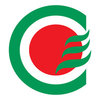
i
NACL
Industries
Filter interviews by
NACL Industries Graduate Engineer Trainee (Get) Interview Questions and Answers
NACL Industries Graduate Engineer Trainee (Get) Interview Experiences
1 interview found
I applied via Campus Placement and was interviewed before Apr 2021. There were 4 interview rounds.
Mental ability English grammar aptitude test
Around 7 members to make a discussion about a single topic
(1 Question)
- Q1. Make a good command of any subject in their respective branch
(1 Question)
- Q1. Communication skills body language personal information
Interview Preparation Tips
Top trending discussions






Interview questions from similar companies

Graduate Engineer Trainee (Get) Interview Questions & Answers
PI Industriesposted on 14 Dec 2019
I applied via Campus Placement and was interviewed in Jun 2019. There were 5 interview rounds.
Interview Questionnaire
12 Questions
- Q1. Introduce yourself and what are you weak and strong characteristics?
- Ans.
I am a passionate engineering graduate with strong analytical skills and a commitment to continuous learning and improvement.
Strong characteristic: Problem-solving skills - I enjoy tackling complex engineering challenges, like optimizing a design for efficiency.
Weak characteristic: Perfectionism - I sometimes spend too much time on details, but I'm learning to balance quality with deadlines.
Strong characteristic: Team ...
- Q2. Tell me about the PI industries?
- Ans.
PI Industries is a leading Indian agrochemical company specializing in crop protection and custom synthesis.
Founded in 1946, PI Industries has a strong legacy in the agrochemical sector.
The company focuses on research and development, with a dedicated R&D center for innovation.
PI Industries offers a wide range of products, including herbicides, insecticides, and fungicides.
It has a significant presence in both dome...
- Q3. What is herbicide ?
- Ans.
Herbicide is a type of pesticide used to kill unwanted plants.
Herbicides are chemicals that are used to control or kill unwanted plants.
They are commonly used in agriculture to prevent weeds from competing with crops.
Some herbicides are selective, meaning they only target specific types of plants, while others are non-selective and will kill any plant they come into contact with.
Examples of herbicides include glyphosat...
- Q4. Tell me some product names of PI industries?
- Ans.
PI Industries is a leading agrochemical company in India that manufactures and supplies a wide range of products.
Nominee Gold
Fame Granules
Fame Insecticide
Ankur
Fame 1% Dust
Fame 2.5% Dust
Fame 5% Dust
Fame 25% WG
Fame 40% SC
Fame 50% SP
Fame 80% WP
Fame 20% EC
Fame 75% WP
Fame 50% WG
Fame 20% WG
Fame 25% SC
Fame 10% EC
Fame 20% SP
Fame 40% WG
Fame 50% EC
Fame 60% WP
Fame 70% WP
Fame 80% WDG
Fame 90% WDG
Fame 95% TC
Fame 97% TC
Fame 98% TC
Fam...
- Q5. What is Bernoulli's theorem draw and explain the importance in industries? What are it's limitations?
- Ans.
Bernoulli's theorem explains the relationship between fluid speed and pressure.
Bernoulli's theorem states that as the speed of a fluid increases, its pressure decreases.
It is important in industries such as aviation, where it is used to design wings and airfoils.
It is also used in the design of pipelines and pumps.
Limitations include the assumption of incompressible and non-viscous fluids, and the neglect of friction a...
- Q6. Waht is difference in pump and compressor?
- Ans.
Pump is used to transfer fluids from one place to another while compressor is used to compress gases.
Pump is used to move fluids like water, oil, etc. from one place to another.
Compressor is used to compress gases like air, refrigerant, etc.
Pumps are used in industries, households, and agriculture while compressors are used in refrigeration, air conditioning, and gas pipelines.
Pumps have a lower pressure ratio while co...
- Q7. What happens if a shutoff valve is closed and pump is running dry?
- Ans.
Closing a shutoff valve while the pump is running dry can cause damage to the pump and other components.
The pump will continue to run but without any fluid to circulate, causing it to overheat and potentially seize.
The lack of fluid can also cause damage to the impeller and other internal components.
The pressure in the system can also increase, leading to potential leaks or bursts in the pipeline.
It is important to ens...
- Q8. What happens if the shutoff valve is closed while pumping in centrifugal pump?
- Ans.
Closing the shutoff valve while pumping in a centrifugal pump can cause damage to the pump and the piping system.
The pump will continue to generate pressure, leading to a buildup of pressure in the piping system.
This can cause the pump to overheat and potentially damage the impeller.
The piping system may also experience damage due to the increased pressure.
It is important to ensure that the shutoff valve is only closed...
- Q9. If pumps are connected in series and in parellel, what changes you can see?
- Ans.
Connecting pumps in series increases head while connecting in parallel increases flow rate.
Connecting pumps in series increases the total head of the system while connecting in parallel increases the total flow rate.
In series connection, the discharge remains the same while the head increases.
In parallel connection, the head remains the same while the discharge increases.
Series connection is used when high head is requ...
- Q10. Write down the dimensions of Power, energy, force and acceleration.
- Ans.
Dimensions of power, energy, force and acceleration.
Power is measured in watts (W) and is the rate at which work is done.
Energy is measured in joules (J) and is the capacity to do work.
Force is measured in newtons (N) and is the push or pull on an object.
Acceleration is measured in meters per second squared (m/s^2) and is the rate of change of velocity.
- Q11. Do you know about valves?
- Ans.
Valves are mechanical devices used to control the flow of fluids or gases.
Valves are used in various industries such as oil and gas, water treatment, and chemical processing.
They can be classified into different types such as gate valves, ball valves, and butterfly valves.
Valves can be operated manually or automatically using actuators.
They play a crucial role in maintaining the safety and efficiency of industrial proc...
- Q12. Explain the types ?
- Ans.
Types of what? Please provide more context.
Please provide more context for the question.
Without context, it is impossible to provide a meaningful answer.
Types can refer to many different things, such as types of engineering, types of materials, types of software, etc.
Interview Preparation Tips
specifically...
1. Pumps
2. Heat exchanger
3. Valves
4. Distillation column
And I gave 8 interviews Bernoulli's theorem , pumps and valves were constantly asked.
Some more tips are as follows:
If you don't know about the topics just say I Don't know
Be honest about yourself.(They took written test and in interview they asked how was the test, I said it was average. They asked me one question from the paper related to power number I made it correct in the paper but i couldn't answer , so he asked... you attempted it correctly and I said "sir tukka mara tha".
Skills evaluated in this interview

Graduate Engineer Trainee (Get) Interview Questions & Answers
PI Industriesposted on 19 Sep 2023
I applied via Campus Placement and was interviewed in Mar 2023. There were 3 interview rounds.

(2 Questions)
- Q1. Questions about protection of power system
- Q2. Questions about electrical machines
(2 Questions)
- Q1. Transformer and it's protection
- Ans.
Transformer protection is essential to prevent damage and ensure reliable operation.
Types of protection include overcurrent, overvoltage, differential, and thermal protection.
Relays are used to detect faults and initiate protective actions.
Buchholz relay is used for detecting internal faults in oil-filled transformers.
Pressure relief devices are installed to prevent explosion in case of internal faults.
Regular maintena...
- Q2. Metering and protection
Interview Preparation Tips

Graduate Engineer Trainee (Get) Interview Questions & Answers
Deccan Fine Chemicalsposted on 17 Aug 2021
Interview Questionnaire
2 Questions
- Q1. First of as usual asked personal information. After that basic questions from technical subjects like designing of he what is heat capacity and unit , what is the fundamental of reflux and reflux ratio how...
- Q2. Before the interview must clear fundamental of technical subject

Graduate Engineer Trainee (Get) Interview Questions & Answers
Deccan Fine Chemicalsposted on 29 Mar 2022
I applied via Campus Placement and was interviewed before Mar 2021. There was 1 interview round.
(2 Questions)
- Q1. What are vourious mass transfer operatiions
- Ans.
Mass transfer operations involve the movement of one or more components from one phase to another.
Distillation
Absorption
Extraction
Adsorption
Membrane separation
Crystallization
Drying
- Q2. Explain about batch distillation
- Ans.
Batch distillation is a process of separating components of a mixture based on their boiling points.
It involves heating a mixture in a batch still and collecting the vapor as it condenses.
The components with lower boiling points will vaporize first and can be collected separately.
The process is repeated multiple times to achieve higher purity of the desired component.
It is commonly used in the production of alcoholic b...
Interview Preparation Tips

Graduate Engineer Trainee (Get) Interview Questions & Answers
Deccan Fine Chemicalsposted on 10 Feb 2023
I applied via Campus Placement and was interviewed in Jan 2023. There were 4 interview rounds.

Questions regarding chemical engineering subjects
(1 Question)
- Q1. Technical interview regarding every topic which come to their mind. Tests the knowledge very much.
(1 Question)
- Q1. Explained regarding policies and duties clearly. Some general questions regarding candidate's acceptance and relocation.
Interview Preparation Tips

I applied via Recruitment Consultant and was interviewed in Jul 2021. There were 6 interview rounds.
Interview Questionnaire
1 Question
- Q1. Major high risks involved in P2P and O2C process. Like this.
- Ans.
Major high risks in P2P and O2C process
Fraudulent activities such as fake invoices and payments
Inaccurate data entry leading to incorrect payments or deliveries
Lack of proper controls and monitoring leading to errors and losses
Non-compliance with regulations and policies leading to legal and financial penalties
Cybersecurity threats such as hacking and data breaches
Supplier or customer bankruptcy affecting the entire pr...
Interview Preparation Tips

Interview Questionnaire
1 Question
- Q1. Why are you leave current organization

I applied via Approached by Company and was interviewed in Jul 2023. There were 3 interview rounds.

(2 Questions)
- Q1. Subject related means technical aspects
- Q2. Market analysis
(4 Questions)
- Q1. Previous company experience
- Q2. Promotional activities
- Q3. Final round package
- Q4. And also person behavior

I applied via AmbitionBox and was interviewed in Jun 2022. There were 2 interview rounds.

(3 Questions)
- Q1. Chemical information
- Q2. Give Any five insecticides technical Name
- Ans.
Insecticides are chemicals used to kill or control insects. Here are five technical names of commonly used insecticides.
1. Imidacloprid - a systemic insecticide used to control sucking insects on crops.
2. Permethrin - a broad-spectrum insecticide used to control a wide range of pests.
3. Chlorpyrifos - an organophosphate insecticide used to control insects in agriculture and public health.
4. Cypermethrin - a synthetic p...
- Q3. Give the Pesticides technical name
- Ans.
Pesticides technical names vary depending on the specific pesticide. They are usually complex chemical names.
Pesticides technical names are typically complex chemical names
Examples of pesticides technical names include Glyphosate, Chlorpyrifos, Imidacloprid, and Malathion
Each pesticide has a unique technical name that reflects its chemical composition and structure
Interview Preparation Tips
NACL Industries Interview FAQs
Tell us how to improve this page.
NACL Industries Interviews By Designations
- NACL Industries National Sales Manager Interview Questions
- NACL Industries Graphic Designer Interview Questions
- NACL Industries Manager Interview Questions
- NACL Industries Software Developer Interview Questions
- NACL Industries Senior Merchandiser Interview Questions
- NACL Industries HR Manager Interview Questions
- NACL Industries Electrician Interview Questions
- NACL Industries Sales Manager Interview Questions
- Show more
Graduate Engineer Trainee (Get) Interview Questions from Similar Companies
NACL Industries Graduate Engineer Trainee (Get) Reviews and Ratings
based on 2 reviews
Rating in categories
|
Assistant Manager
46
salaries
| ₹3.3 L/yr - ₹13.1 L/yr |
|
Senior Executive
27
salaries
| ₹3.8 L/yr - ₹8 L/yr |
|
Senior Manager
23
salaries
| ₹10 L/yr - ₹35 L/yr |
|
Executive
23
salaries
| ₹3.6 L/yr - ₹6 L/yr |
|
Territory Manager
21
salaries
| ₹5 L/yr - ₹10.1 L/yr |

Corteva Agriscience

GSP Crop Science

Deccan Fine Chemicals

PI Industries
- Home >
- Interviews >
- NACL Industries Interview Questions












